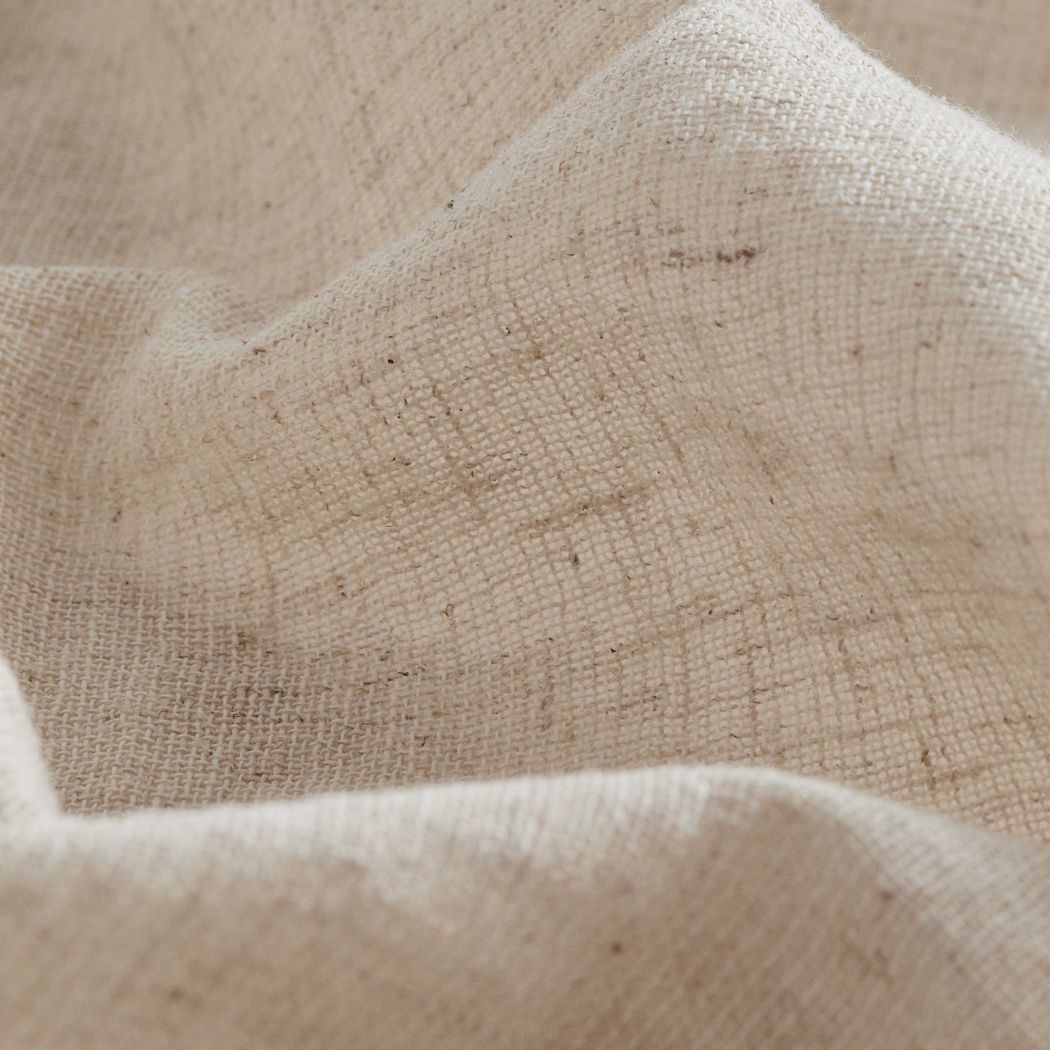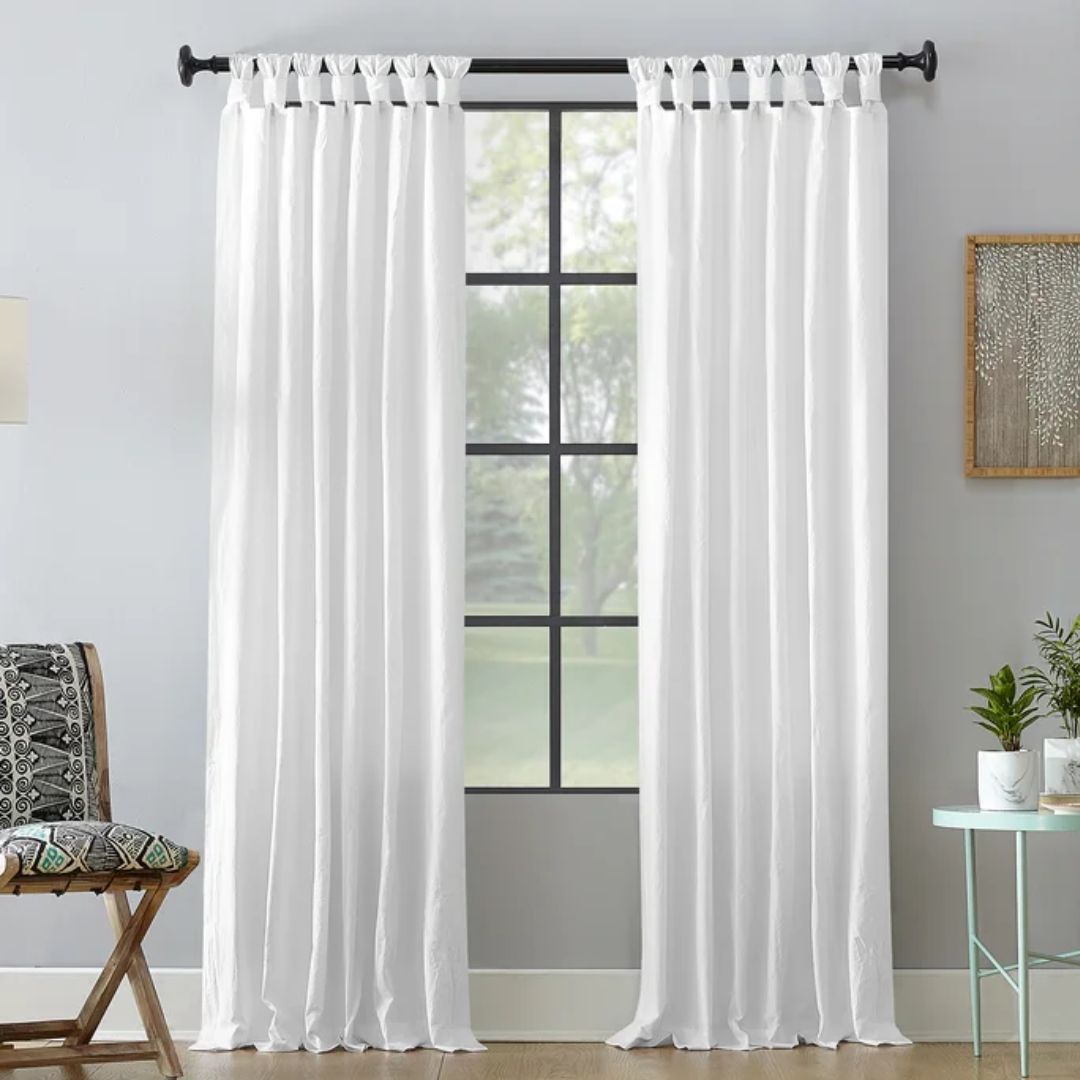Should Curtains Touch the Floor? The Golden Rule for Curtain Length That Will Flatter Your Room
The ideal curtain length is nuanced, but there's some definitive guidelines to follow for a modern look, and tips for what to do if yours fall short
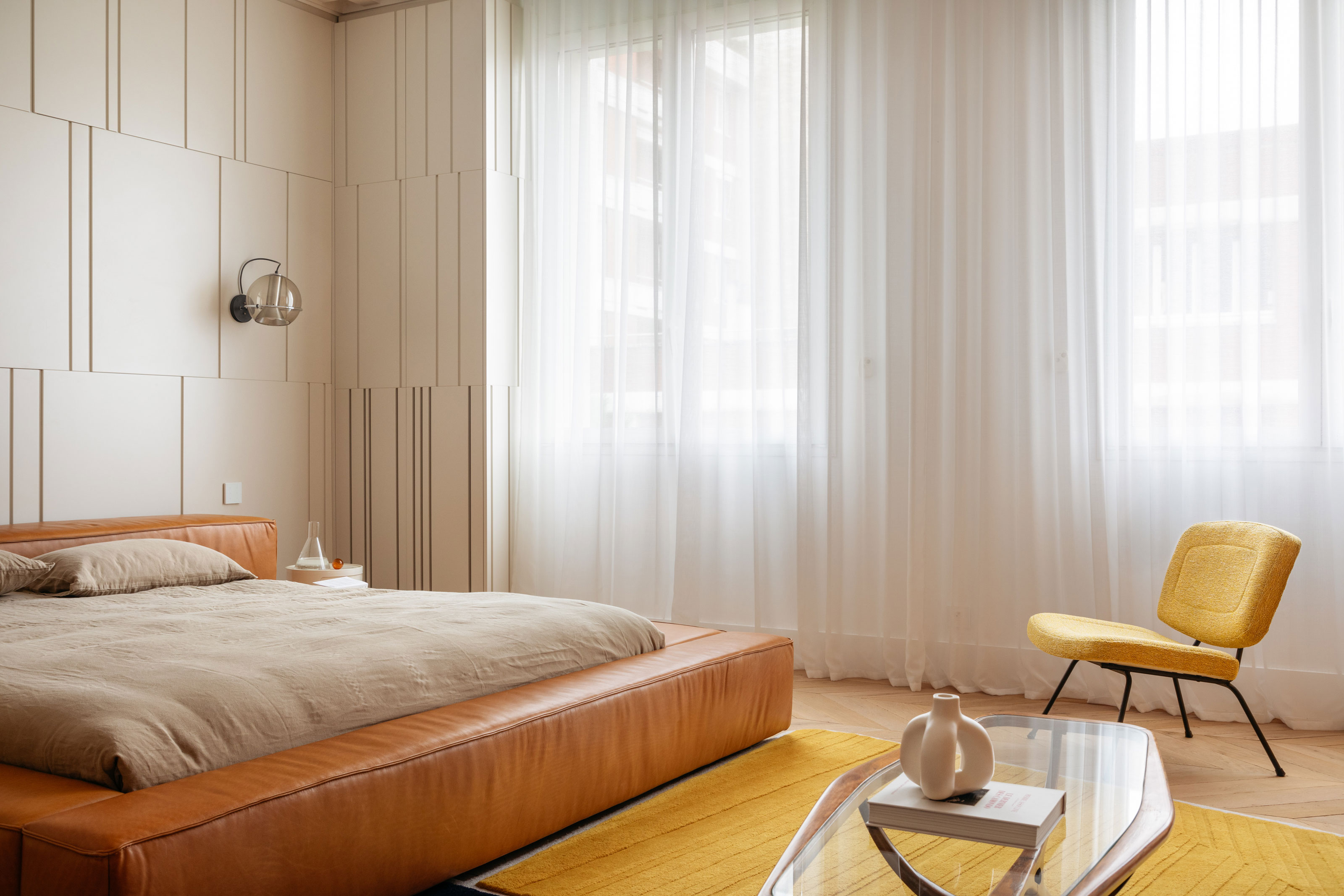

There are some 'rules' when it comes to designing your home that you'll hear differently every time someone tells you — and that's because they're not really rules at all. When it comes to something like whether your curtains should touch the floor, the answer is, it really depends on what you want to achieve.
Let's be honest — when it comes to modern window treatments, in most cases your curtains should touch the floor in the sense that they should be full length. However, when it comes to the exact length and that interaction between floor and curtain, it's a little bit more nuanced.
We'll need to answer a few extra questions to get to the bottom of whether curtains should touch the floor, but we've asked interior designers and curtain experts to guide us through.
Do curtains always need to be full length?
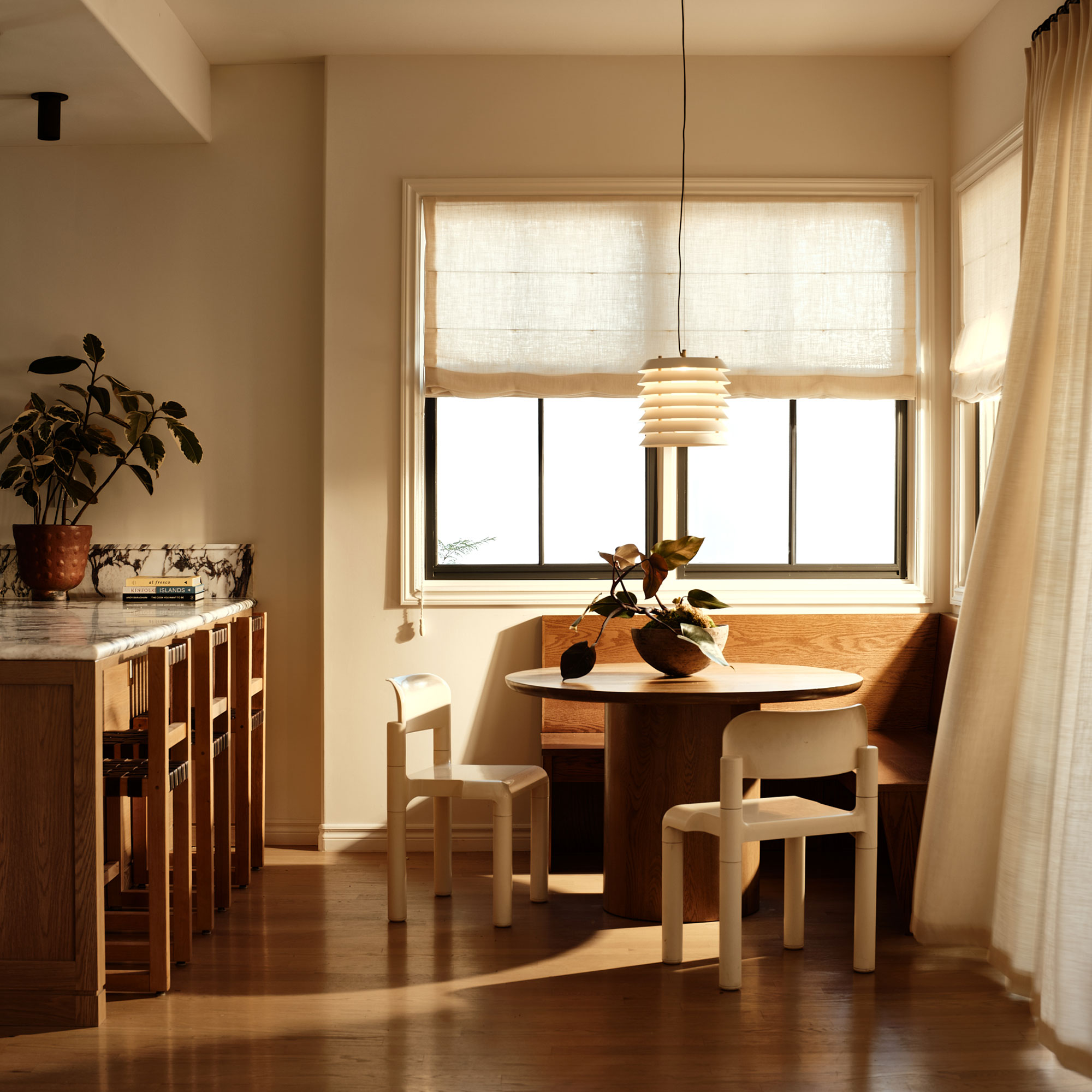
Short curtains, which tend to be around 63 inches and break at the bottom of a window, aren't used often in modern interior design. Whether dressing standard windows or floor-to-ceiling ones, full-length curtains are generally preferred. However, they don't work for every scheme.
"Full-length curtains can be a great tool to help smaller or shorter spaces feel bigger or taller than they actually are, however, in other cases, they can overwhelm a space, not be appropriate functionally, or simply not be an ideal aesthetic fit," says Kaylen Flugel, founder of Kaylen Flugel Design. One such instance is when a heat source, such as a radiator, is underneath a window, as curtains will block heat when closed.
However, designers generally still won't choose short curtains in modern designs in these instances. "That’s typically when I suggest an alternative treatment," Kaylen says — think curtains vs blinds, shutters, and more.
Should curtains actually touch the floor?
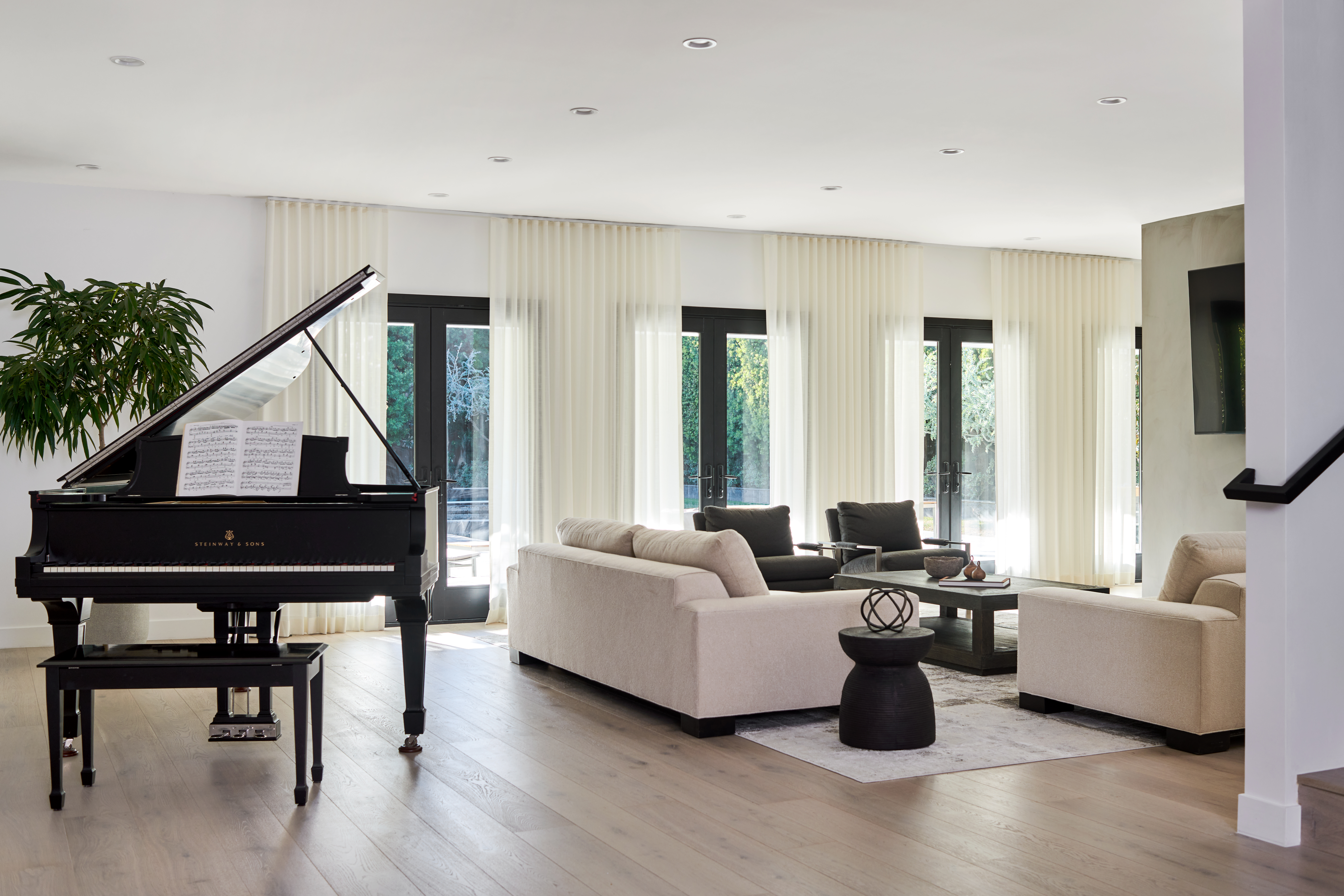
Now you're looking at full-length curtains, there's still the question of whether your curtains should actually touch the floor, or float a little above.
There are a few schools of thought on this. In more traditional schemes, you'll often see curtains pool somewhat generously, but in modern interiors, curtain length falls in one of these two camps.
"I'd say they should just kiss the floor," says interior designer Linda Hayslett of LH.Designs. "There should be just a little space between the floor and the fabric, perhaps 1/8" to 1/4" max. This way it gives the drapery space to move and breathe as depending on the material it can stretch over time. But, you also don't want it to look too short like something was done incorrectly."
"This look is the cleanest and accentuates the height of a room," agrees Molly Torres Portnof of DATE Interiors. "While puddling curtains are whimsical and fun, they're not the most practical, especially with pets and children." However, there's a fine line between curtains touching the floor and a gap that makes your floor-length curtains look like you've ordered them too short.
Your second option is for curtains to very slightly touch the floor. "I personally prefer for curtains to hit the floor with a small ‘break’, meaning the fabric bends just enough to show the material is touching the ground without making a true ‘puddle'," Kaylen explains. "I feel there’s a richness that comes with this look which again helps to soften some of the more modern spaces I work on."
What is the ideal length of curtains from the floor?
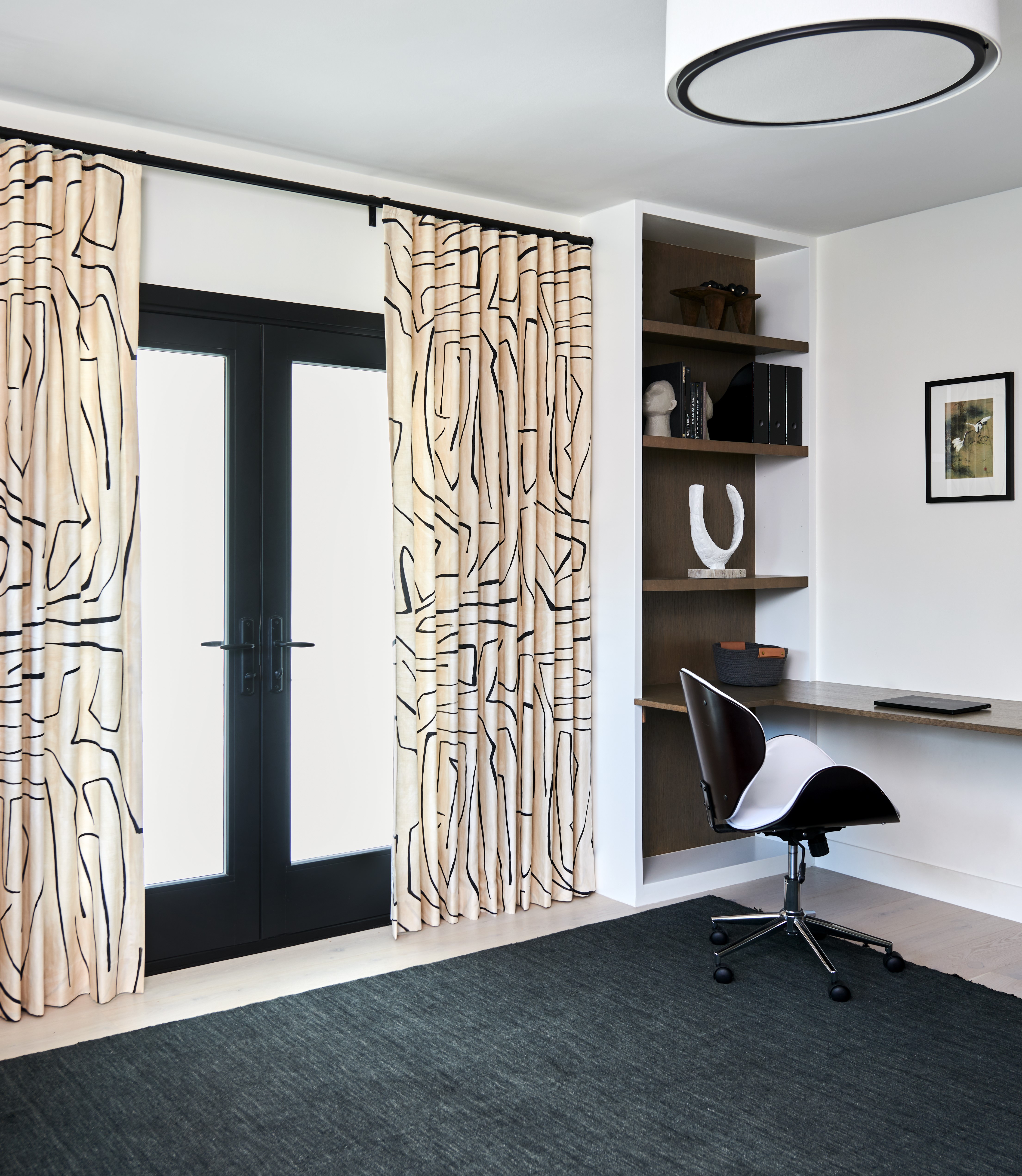
Whether it's your bedroom or living room curtains, it's best to have a standard length for all the drapes in the room.
"The ideal length is from floor to ceiling, if possible, with at least a 1/8" to 1/4" max spacing from the floor to the bottom of the drapery," says Lauren. "This helps with the fabric as it can stretch over time."
What can I do if my curtains don't touch the floor?
If you aren't purchasing pre-ordered curtains and are hemming them yourself, there may be a small margin for error when measuring for curtains. In this instance, too, it might not be beyond the realms of possibility to unpick curtains and re-hem them with a smaller seam allowance.
It's a little harder with pre-made curtains, but there are options. "If they arrive and they're a little off from what you were hoping, there's always the option to hang your curtain rod a little higher," says interior designer Becky Shea.
FAQs
Are puddling curtains out of style?
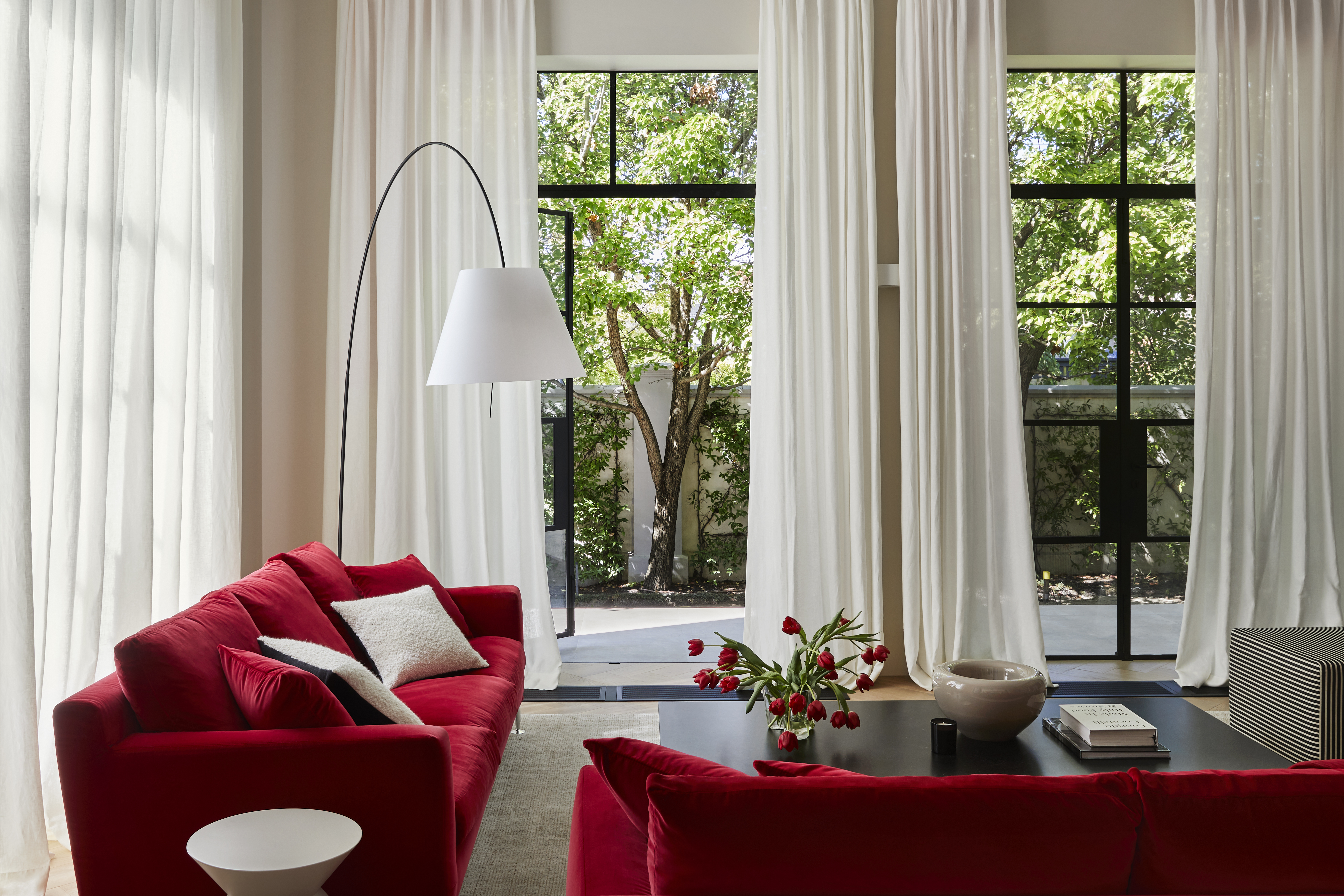
Puddling curtains have a whimsical feel, and if it's a casual vibe you want to create for your bedroom curtains then go ahead with this style.
'Puddling curtains are a very specific look and if you're ok with the maintenance of them then they can elevate certain spaces,' says Lauren. 'However, I am not a huge fan of them for homes where you have pets and kids. They can get dirty very quickly and stain at the bottoms.'
If you want a puddle but with a more practical approach, then make sure they just touch the floor — this makes them the perfect length for blocking out light and drafts. Consider lighter fabrics to create these. Larger puddles aren't on trend right now.
Does your choice of textile make a difference?
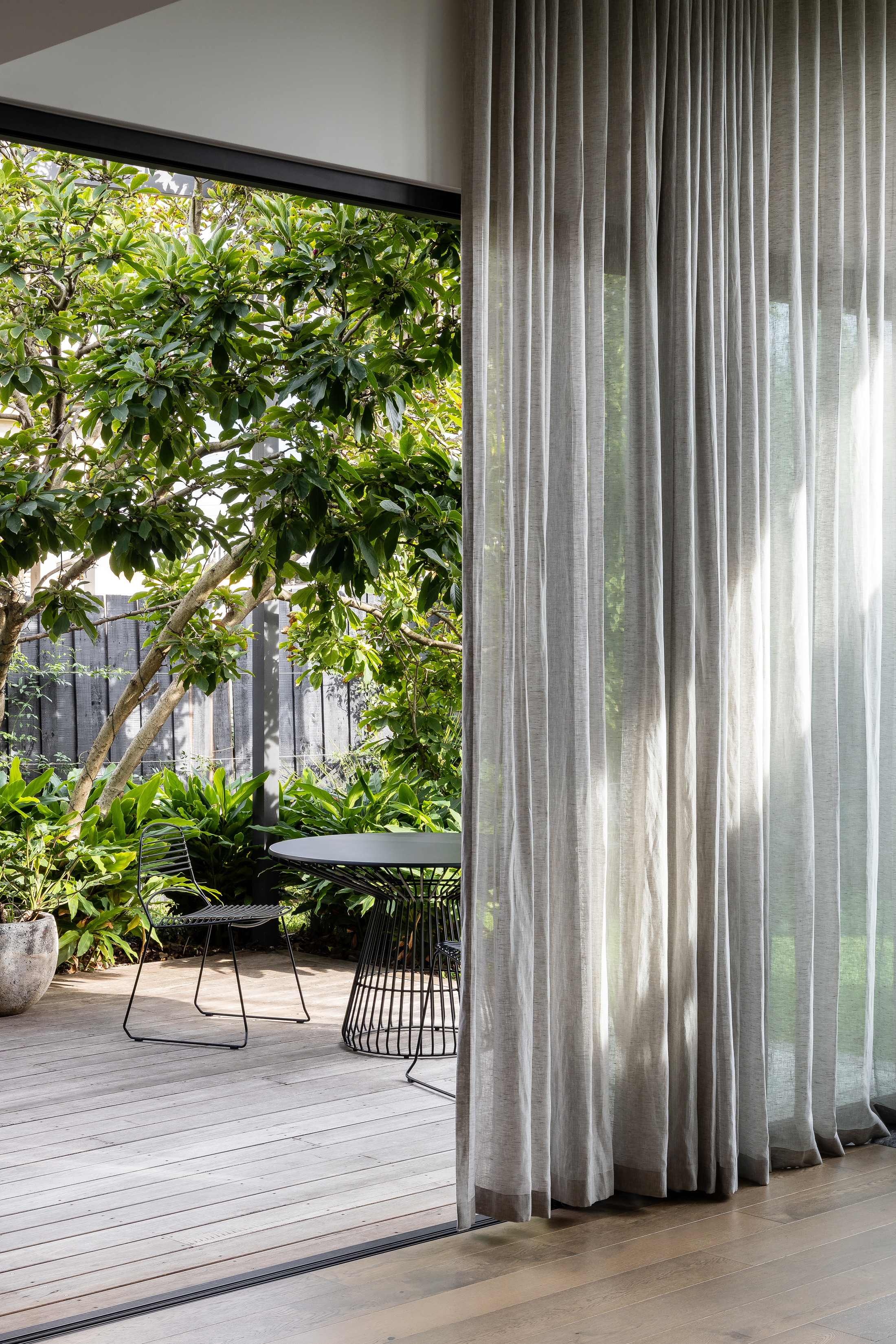
Along with knowing how to hang curtains, when you're dealing with such fine margins of measurements, it pays to know how different fabrics react as well. "Linen, for example will always move and shrink, growing with the seasons," says interior designer Lisa Staton.
When using natural fibers like cotton, silk or wool, they're also prone to stretch once hung which may change your gap over time, especially with heavier materials. In this instance, a broken puddle on the floor will help relieve some of the weight on your curtains, too.
Can you hang curtains too high?
Ideally, the best height to hang curtains is just below the crown (the area where the walls and ceiling meet) – while still maintaining a relationship with the window. Of course, in the case of a double or triple-height room, don't take the drapery to the crown.
Be The First To Know
The Livingetc newsletters are your inside source for what’s shaping interiors now - and what’s next. Discover trend forecasts, smart style ideas, and curated shopping inspiration that brings design to life. Subscribe today and stay ahead of the curve.

Luke Arthur Wells is a freelance design writer, award-winning interiors blogger and stylist, known for neutral, textural spaces with a luxury twist. He's worked with some of the UK's top design brands, counting the likes of Tom Dixon Studio as regular collaborators and his work has been featured in print and online in publications ranging from Domino Magazine to The Sunday Times. He's a hands-on type of interiors expert too, contributing practical renovation advice and DIY tutorials to a number of magazines, as well as to his own readers and followers via his blog and social media. He might currently be renovating a small Victorian house in England, but he dreams of light, spacious, neutral homes on the West Coast.
-
 The 'New British' Style? This Victorian London Home Embraces Its Owners' Global Background
The 'New British' Style? This Victorian London Home Embraces Its Owners' Global BackgroundWarm timber details, confident color pops, and an uninterrupted connection to the garden are the hallmarks of this relaxed yet design-forward family home
By Emma J Page
-
 Muji Living Room Ideas — 5 Ways to Harness The Calming Qualities of This Japanese Design Style
Muji Living Room Ideas — 5 Ways to Harness The Calming Qualities of This Japanese Design StyleInspired by Japanese "zen" principles, Muji living rooms are all about cultivating a calming, tranquil space that nourishes the soul
By Lilith Hudson
